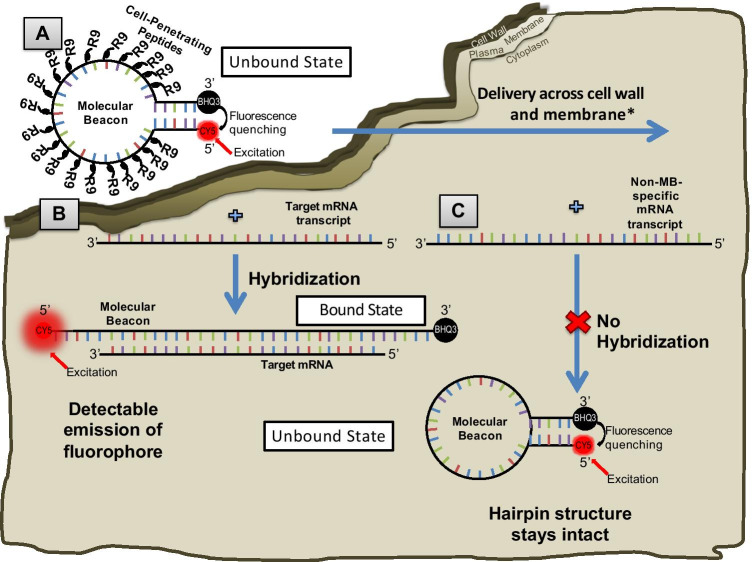Fig. 1.
FISH-TAMB probe conformation and hybridization to encountered messenger RNAs. A An oligomer comprised of a 24 base-long complementary mcrA mRNA sequence is flanked by 5 reverse complement nucleotides to form a molecular beacon (MB) loop and stem structure. Cell-penetrating peptides (CPPs) comprising 9 arginine sequences (R9) are non-covalently bound to the MB sequence and are responsible for its delivery across the cell wall and plasma membrane. B Fluorescence of Cy5 fluorophore covalently bound to the 5′ end of the MB sequence remains quenched by BHQ3 bound to the 3′ terminus until the MB hybridizes to a target transcript sequence. Hybridization results in the linearization of the MB, subsequently unquenching Cy5 from BHQ3, allowing the fluorophore’s emission upon excitation by a
source in the red bandwidth of the visible light spectrum. C If the MB encounters an mRNA transcript that is not its intended target, it will retain its hairpin conformation, and fluorescence of Cy5 will remain quenched by BHQ3. Images not to scale

